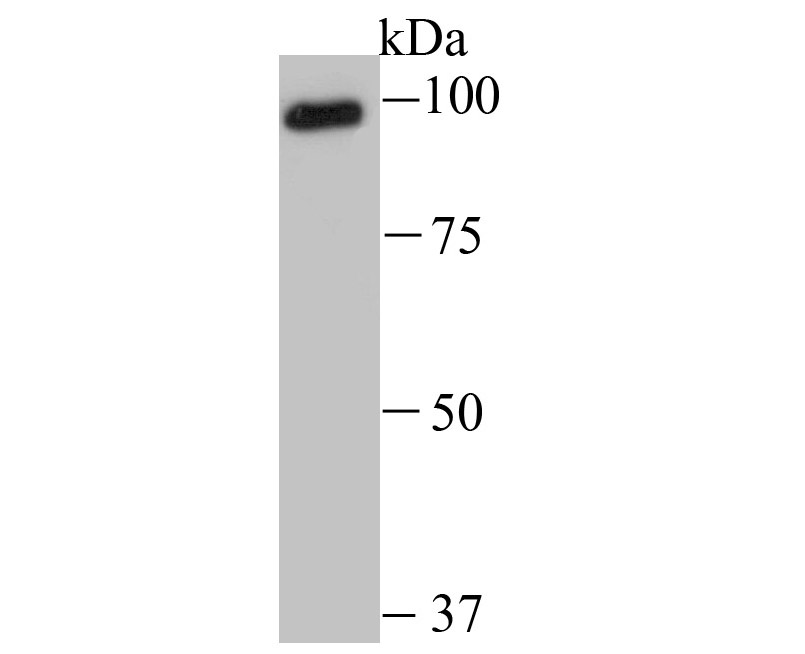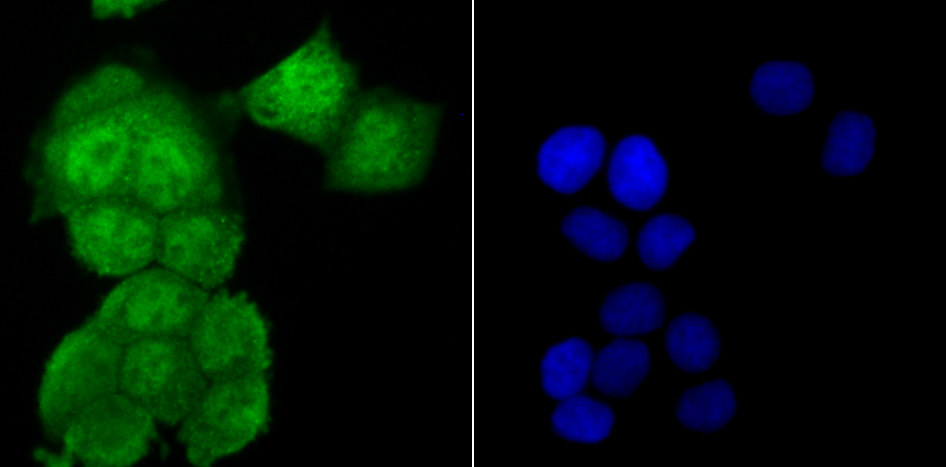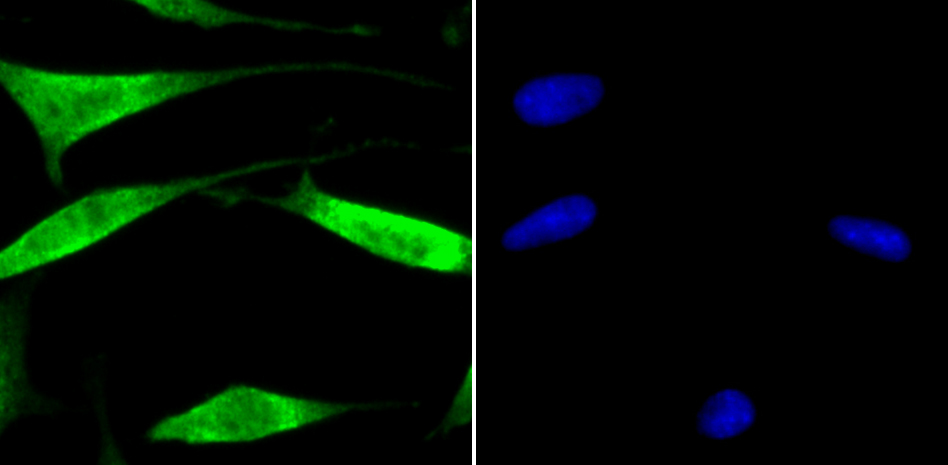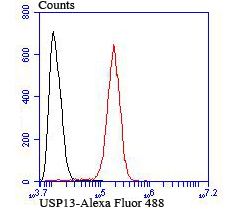Product Detail
Product NameUSP13 Rabbit mAb
Clone No.JU72-38
Host SpeciesRecombinant Rabbit
Clonality Monoclonal
PurificationProA affinity purified
ApplicationsWB,ICC/IF,FC,IP
Species ReactivityHu, Ms
Immunogen DescRecombinant protein
ConjugateUnconjugated
Other NamesDeubiquitinating enzyme 13 antibody
Isopeptidase T 3 antibody
Isopeptidase T-3 antibody
Isopeptidase T3 antibody
ISOT 3 antibody
ISOT-3 antibody
ISOT3 antibody
Ubiquitin carboxyl terminal hydrolase 13 antibody
Ubiquitin carboxyl-terminal hydrolase 13 antibody
Ubiquitin specific peptidase 13 (isopeptidase T3) antibody
Ubiquitin specific peptidase 13 antibody
Ubiquitin specific processing protease 13 antibody
Ubiquitin specific protease 13 antibody
Ubiquitin thioesterase 13 antibody
Ubiquitin thiolesterase 13 antibody
Ubiquitin-specific-processing protease 13 antibody
UBP13 antibody
UBP13_HUMAN antibody
USP 13 antibody
USP13 antibody
Accession NoSwiss-Prot#:Q92995
Uniprot
Q92995
Gene ID
8975;
Calculated MW97 kDa
Formulation1*TBS (pH7.4), 1%BSA, 40%Glycerol. Preservative: 0.05% Sodium Azide.
StorageStore at -20˚C
Application Details
WB: 1:500-1:2,000
ICC: 1:50-1:200
IP: 1:10-1:50
FC: 1:50-1:100
Western blot analysis of USP13 on mouse testis tissue lysate using anti-USP13 antibody at 1/500 dilution.
ICC staining USP13 in A431 cells (green). The nuclear counter stain is DAPI (blue). Cells were fixed in paraformaldehyde, permeabilised with 0.25% Triton X100/PBS.
ICC staining USP13 in Hela cells (green). The nuclear counter stain is DAPI (blue). Cells were fixed in paraformaldehyde, permeabilised with 0.25% Triton X100/PBS.
ICC staining USP13 in SH-SY5Y cells (green). The nuclear counter stain is DAPI (blue). Cells were fixed in paraformaldehyde, permeabilised with 0.25% Triton X100/PBS.
Flow cytometric analysis of SH-SY5Y cells with USP13 antibody at 1/100 dilution (red) compared with an unlabelled control (cells without incubation with primary antibody; black).
The ubiquitin (Ub) pathway involves three sequential enzymatic steps that facilitate the conjugation of Ub and Ub-like molecules to specific protein substrates. Through the use of a wide range of enzymes that can add or remove ubiquitin, the Ub pathway controls many intracellular processes such as signal transduction, transcriptional activation and cell cycle progression. USP13 (ubiquitin specific peptidase 13), also known as ISOT3 (Isopeptidase T-3), is an 863 amino acid protein that belongs to the peptidase C19 family and contains one UBP-type zinc finger and two UBA domains. Highly expressed in testicular and ovarian tissue, USP13 functions to catalyze the water-dependent conversion of a ubiquitin C-terminal thioester to a thiol and a free ubiquitin.
If you have published an article using product 49702, please notify us so that we can cite your literature.







 Yes
Yes



